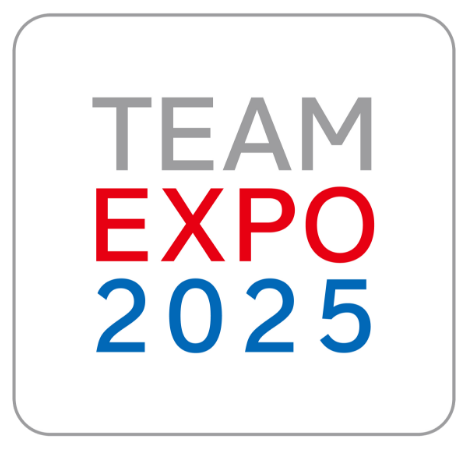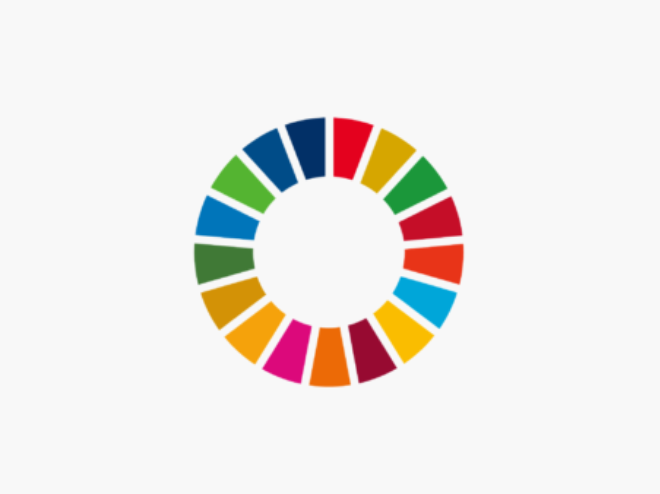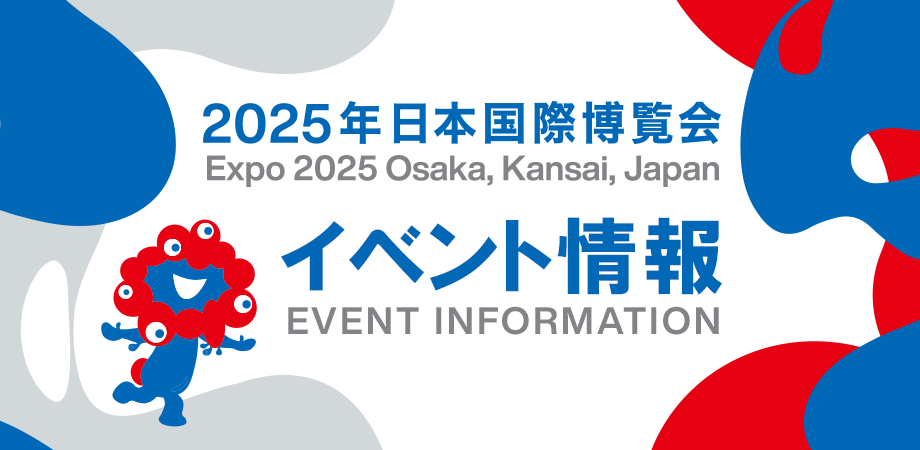【開催報告】第2回「TEAM EXPO 2025 MEETING」in TOKYO

見るだけじゃない、
あなたが主人公になる万博がはじまります。
「TEAM EXPO 2025」は多様な人たちがチームを組み、多彩な活動で大阪・関西万博とその先の未来に挑む、みんながつくる参加型プログラムです。
共創チャレンジ
自分たちが描くワクワクする未来の実現のためのアクション
-

2025.10.28
クロスプロジェクト 交わることで未来が動き出す
本学では、地域と大学、そして多様な文化が交わる新たな取り組み「CROSS PROJECT」を始動します。
このプロジェクトは、多文化共生の視点から、人と人が出会い、学び合い、支え合う関係を育むことを目的としています。
実施チーム「CROSS LINK」は、韓国ゼミの学生を中心に構成され、地域の人々との交流やワークショップを通して、異なる背景や価値観が交わる中に生まれる“共に生きる知恵”を探っていきます。
活動の拠点となる〈ウェルビーイング共創ハブ〉は、人と地域のつながりを再発見し、心豊かな暮らしを共に考えるための学びと創造の空間です。
学生たちはこの場所で地域の声に耳を傾けながら、日常の中で見つけた気づきや出会いを、作品展示や発表会、サロン活動などを通して社会に発信していきます。
考えるだけでなく、形にし、共有することで、より良い共生のあり方を模索していきます。
活動内容
交流サロン定期開催
– 拠点(帝塚山学院大学ウェルビーング共創ハブ:泉ケ丘駅前拠点)で「韓国お茶と語り場」や「文化トークセッション」を地域向けに実施
– 学生・教員が企画運営、住民(土着・外国ルーツ含む)と対話
ワークショップ・講座シリーズ
– 韓国語・韓国文化(舞踊・音楽・書道・料理など)の体験講座
– 参加者を”バディペア”とし、学生・住民ペアで学びあう仕組み
地域プロジェクト連携
– 地域イベントとの合同企画
– 地域施設での出前文化講座
発信・展示
– 写真・映像・アート作品の展示会
– SNS発信、地域広報誌への寄稿、交流案内パンフレット制作C10669 -

2025.10.28
日本・世界の!ご当地チャレンジ遊び~遊びの力で地域のみんなを元気に!~
遊びには子どもから大人までみんなをつなげ、心も体も元気にする力があります。
「チャレンジ遊び」は「くつとばし」「傘バランス」など記録に挑戦する楽しい遊びです。誰でも挑戦でき、誰でも運営でき、誰でも遊びのチャンピオンになることができます。「ご当地チャレンジ遊び」は全国各地の特産物や文化・名所・歴史などをモチーフにしたものです。(例 リンゴの皮むき・1分間シャコガイつみ・独眼竜政宗の輪投げ・毘沙門様への一歩一歩 等)
この「ご当地チャレンジ遊び」をみんなで考え、全国発信したり、遊び・交流イベント等を開催したりすることにより、子どもの様々な体験の場をつくり自分の地域や世界への関心を高めるとともに、地域のより多くの方が子ども支援や地域活性化・まちづくり等に関わるきっかけをつくることを目指します。
地域のみんなの元気につながるよう、遊び心をもって様々な人が楽しい時間を共有する場を創出していきます。
(1)ご当地チャレンジ遊びの開発・収集と公開
①各地で行われているご当地チャレンジ種目の収集
②全国各地のイベント等で親しまれてきた約400種目(1988年から全国47都道府県で展開)のチャレンジ種目を参考に、各地の特産物や文化・名所・歴史などをモチーフにした「ご当地チャレンジ遊び」を全国各地・世界の国の子ども~大人の皆さんと一緒に創作。
③ご当地チャレンジ遊びの日本地図・世界地図を作るなどして公開。
など
(2)チャレンジ遊びの記録に挑戦!全国各地でのイベント展開
①遊びイベントの主催開催
②自治体・企業・施設・団体等主催イベントの企画・運営協力等
③ご当地チャレンジ遊び創作のワークショップの開催・講師派遣
④遊びイベントの企画・運営講習会開催・講師派遣、運営スタッフ派遣
⑤講習会開催・講師派遣(青少年体験活動推進・地域参画(社会教育)・体験活動推進・まちづくり等)
など
(3)コンテンツ・ノウハウ提供
「ご当地チャレンジ遊び」をとおした取組の応援
①各家庭、教育現場や子ども支援の場・施設・団体等への提供
②学生ボランティア等が企画・運営する地域イベントへの提供
③その他
など
C10670 -

2025.10.28
持続可能な経済成長の前提条件である『安全(製品安全・消費者安全)』の価値を伝える!
ペロブスカイト太陽電池、電気自動車のバッテリー、再生素材を活用した製品開発、
サーキュラエコノミーとしてのリユース・リパーパス・リペアなどのサービスの普及拡大、
地球に優しい新製品・新サービスが普及する上で欠かせないのが「安全」の確保です。
SDGs実現の前提条件である安全(製品安全・消費者安全)について、様々な団体の皆様と
定期的に情報交換・再認識すると共に、エシカル(安全を含む)な消費と生産について
考える機会を提供しています。
(春季)テーマ:消費者の責任について、(秋季)事業者の責任について
ご参考:https://match.future-city.go.jp/pages/platform/e202/2025009
C10668
レポート
(公社)2025年日本国際博覧会協会からの「TEAM EXPO 2025」プログラムの活動状況報告です。
-

2025.03.28
共創チャレンジ「ごみ」で検索してみました!
こんにちは、EXPO共創事務局です。 3月30日は「ごみゼロ国際デー」です。「ごみゼロ国際デー」にちなんで、「ごみ」で検索してみました。そのなかから3件ご紹介します。 ※掲載する共創チャレンジは、記事作成当時の検索結果を基に抽出しています。 海ごみを使ってアート作品を作る活動を通じて、環境問題や海ごみの問題についての関心を増進する! ヘルシーアーバンガーデニングHUGプロジェクト Healthy Urban Gardening HUG Project SmartTrashCanでゴミ問題を解決し、豊かな未来社会を創る 「TEAM EXPO 2025」は多様な人たちがチームを組み、多彩な活動で大阪・関西万博とその先の未来に挑む「共創チャレンジ」が2,000件以上登録されています。 ぜひご自身でも検索機能を使ってすてきな「共創チャレンジ」を見つけてください。 共創チャレンジ検索はこちらから TEAM EXPO 2025 | 共創チャレンジ
-

2025.03.21
共創チャレンジ「水」で検索してみました!
こんにちは、EXPO共創事務局です。 3月22日は「世界水の日」です。「世界水の日」にちなんで、「水」で検索してみました。そのなかから3件ご紹介します。 ※掲載する共創チャレンジは、記事作成当時の検索結果を基に抽出しています。 今治タオルを育む“水と森”の保全と繊維資源アップサイクル コップ1杯の水で、地域の川をDX 排せつ物から水をつくり、緑化社会でヒートアイランド対策と感染症に役立てていくビオトープトイレ 「TEAM EXPO 2025」は多様な人たちがチームを組み、多彩な活動で大阪・関西万博とその先の未来に挑む「共創チャレンジ」が2,000件以上登録されています。 ぜひご自身でも検索機能を使ってすてきな「共創チャレンジ」を見つけてください。 共創チャレンジ検索はこちらから TEAM EXPO 2025 | 共創チャレンジ
-

2025.03.14
共創チャレンジ「幸福」で検索してみました!
こんにちは、EXPO共創事務局です。 3月20日は「国際幸福デー」です。「国際幸福デー」にちなんで、「幸福」で検索してみました。そのなかから3件ご紹介します。 ※掲載する共創チャレンジは、記事作成当時の検索結果を基に抽出しています。 ほめ育で繋ぐ未来:世界の子どもたちを笑顔に! 津軽海峡圏Well-being博 P'review ~ 社会とデザインの幸福な関係を築く伴走型デザインコンペ 「TEAM EXPO 2025」は多様な人たちがチームを組み、多彩な活動で大阪・関西万博とその先の未来に挑む「共創チャレンジ」が2,000件以上登録されています。 ぜひご自身でも検索機能を使ってすてきな「共創チャレンジ」を見つけてください。 共創チャレンジ検索はこちらから TEAM EXPO 2025 | 共創チャレンジ
-

2025.03.07
共創チャレンジ「女性」で検索してみました!
こんにちは、EXPO共創事務局です。 3月8日は「国際女性の日」です。「国際女性の日」にちなんで、「女性」で検索してみました。そのなかから3件ご紹介します。 ※掲載する共創チャレンジは、記事作成当時の検索結果を基に抽出しています。 女性の創業支援に特化した「Sanuki Woman キャリスタ塾」の取組み 女子プロサーファー達と海を守る。「ビーチクリーン&アップサイクル」SDG’s活動 生理用品をトイレットペーパーと同様の世の中にプロジェクト 「TEAM EXPO 2025」は多様な人たちがチームを組み、多彩な活動で大阪・関西万博とその先の未来に挑む「共創チャレンジ」が2,000件以上登録されています。 ぜひご自身でも検索機能を使ってすてきな「共創チャレンジ」を見つけてください。 共創チャレンジ検索はこちらから TEAM EXPO 2025 | 共創チャレンジ
-

2025.02.28
共創チャレンジ「さかな」「魚」で検索してみました!
こんにちは、EXPO共創事務局です。 毎月3日から7日は「さかなの日」です。「さかなの日」にちなんで、「さかな」「魚」で検索してみました。そのなかから3件ご紹介します。 ※掲載する共創チャレンジは、記事作成当時の検索結果を基に抽出しています。 GEXおさかな教室を開講しよう! 料理人発。アイゴの完全養殖や未利用魚の活用で、持続可能な食の未来を目指す 長崎のうまいサカナの未来をつくる 「TEAM EXPO 2025」は多様な人たちがチームを組み、多彩な活動で大阪・関西万博とその先の未来に挑む「共創チャレンジ」が2,000件以上登録されています。 ぜひご自身でも検索機能を使ってすてきな「共創チャレンジ」を見つけてください。 共創チャレンジ検索はこちらから TEAM EXPO 2025 | 共創チャレンジ
-

2025.02.21
共創チャレンジ「母語」で検索してみました!
こんにちは、EXPO共創事務局です。 2月21日は「国際母語デー」です。「国際母語デー」にちなんで、「母語」で検索してみました。そのなかから3件ご紹介します。 ※掲載する共創チャレンジは、記事作成当時の検索結果を基に抽出しています。 ウェルビーイングを当たり前に!「WellBe」で日本の美容とウェルネスを世界へ広める オンライン・グローバル・クワイア 〜世界平和のために〜 メタバース・サイエンスハブ ~世界をつなぐSDGs学習空間~ 「TEAM EXPO 2025」は多様な人たちがチームを組み、多彩な活動で大阪・関西万博とその先の未来に挑む「共創チャレンジ」が2,000件以上登録されています。 ぜひご自身でも検索機能を使ってすてきな「共創チャレンジ」を見つけてください。 共創チャレンジ検索はこちらから TEAM EXPO 2025 | 共創チャレンジ
みんなの投稿
「TEAM EXPO 2025」プログラムに参加されているみなさんからの投稿です。
-

2025.11.25
子ども向け国際交流イベント「Hello World! Kids Online Exchange」第5回開催しました!
2025年11/20(土) 午後4時〜5時 『Hello World! Kids Online Exchange』第5回開催しました! RINXsは大阪・関西万博「共創チャレンジ」登録事業として、英語を通じた国際交流の場を日本の子どもたちに提供しております。万博では世界各国の交流が広がっていますが、日本国内では英語を話す機会が依然として少ない現状があります。RINXsはこの課題を踏まえ、大阪・関西万博閉幕後も、オンラインで外国人とつながり、英語を「使ってみる」「伝わる」を継続して実感できる場をつくっていきます。 その思いから誕生したのが、外国人ゲスト講師と英語で交流する『Hello World! Kids Online Exchange』です。毎回異なる外国人ゲスト講師が登場し、子どもたちは自己紹介や英語クイズを通して、英語だけでなく、多様な文化に触れることができます。 毎月第3土曜日に開催中! 毎回多様な国や文化からのゲスト講師をお招きし、子どもたちが自己紹介をしたり、英語クイズを行います。 「英語を学習する」ことではなく、英語を通して世界とつながる楽しさを体験することを目的としています。 母語以外で話すことで「伝わる喜び」を感じ、外国の人との交流を通して多様な文化や考え方に触れ、「外国語で話すのは特別なことではない」と気づく、そんな体験を通して、世界を広く見る感性を育みます。 万博ロスの皆さん!お子様と一緒にオンラインで世界の人と繋がりませんか? これまでにインド・アルジェリア・ケニア・エジプトなど、世界の様々な国からゲスト講師をお招きしてきました! 毎回違う文化や英語の響きに出会えるのが、このイベントの楽しさ。 次はどこの国の先生が登場するのかな?どうぞお楽しみに!✨ 第6回開催は12月を予定しています。 次回はクリスマスバージョンでお届けします! 日程:12月20日(土)16:00-17:00 (日本時間) 対象:小学生 ※保護者同伴を推奨いたします 開催方法:オンライン(Zoom) 定員:各回先着順 参加費:通常1,500円(税抜) → 初めての方は『参加費無料』✨ ※事前申込みが必要となりますので、詳細は決定次第お知らせいたします。 イベントページ:https://rinxsonline.com/campaign/25 Peatixはこちらから #多文化共生 #英語教育 #アフター万博 #万博ロス #言葉で世界とつながろう! #子ども英会話 #キッズ英語 #オンライン英会話キッズ #子供向けイベント #英語で遊ぼう #親子で英語 #国際交流イベント #オンライン国際交流 #クリスマスイベント
M11017 -

2025.11.08
【開催報告】千里キャンドルロード2025(千里中央公園)
11月8日、千里中央公園で行われた「千里キャンドルロード 2025」に参加しました!@senricandle 千里キャンドルロードメンバーと一緒に、昨年から挑戦しているフローティングキャンドルと千里の竹のコラボレーションコーナー。 2年目の今年は、北大阪急行さんも加わって、とてもにぎやかになりました。北急鳩ファミリーの竹あかりのまわりをくるくる。#北大阪急行 千里キャンドルロードのメンバーと一緒にコツコツ集めた、はちみつやジャム、プリンなどの廃材ビンはなんと108個。いっぱい食べたね〜!! フローティングキャンドルの一部には、メンバー手作りのかおりつきのジェルキャンドルも混ぜました。 あれ?なんかここだけいい匂いするよ。 !気づいてくれた!うれしい! チーム竹未来のコーナーには、東泉丘小学校の小学生のみなさんにデザインを考えてもらった竹あかり。小さな竹あかりは子どもたちの目線にぴったり!個性豊かな竹あかりを楽しんでもらえました!@higaizu 使用済み竹紙コップを堆肥化した土を重りの土として利用して、竹紙コップを使ったあかりアート。たくさんの方にあかりを灯してもらいました。@1ooore.scenes 竹堆肥を使って育てた植物と一緒に寄せ植えた植物発電を展示してお出迎えしました。たくさんの方にアドバイスをいただきながら育てたお花、とてもきれいに咲きました!@nisoul_nenergy@midori10leader @otowa_design #コラボガーデン 北丘小学校6年生のみなさんと一緒に作った竹あんどん、たくさんの方が写真を撮ってくださいました!出前授業を受けた生徒さんがご家族で来てくれたのは、本当にうれしかったです。お家でも千里の竹について話をしてると聞いて、心がぽかぽかしました。#北丘小学校6年生 そして、追大Candle Nightのみなさんと一緒に作った竹あかりもとても素敵でした!Candle Nightのみなさんにも見ていただけて、とてもうれしかったです!@candlenightogu 今年のテーマは「百花繚乱」チーム竹未来を応援してくださったたくさんの方々のおかげで、エントランスコーナーを素敵に飾ることができました!
M11015 -

2025.11.05
【実施報告】社会実験:竹紙コップ堆肥化/植物発電
2025年1月13日〜2025年11月29日千里中央公園LABO前コンポストで「社会実験:竹紙コップの堆肥化/植物発電」を行いました。@1ooore.scenes 竹あかり制作で出る廃材竹チップを堆肥化して、植物を育て、地域の人のみどりの愛着につなげたい! イベントで使用した、竹紙コップ。丈夫なので再利用できそう! そのままゴミにするのはもったいない。 竹チップの乳酸発酵で発生する、微生物の働きで竹紙コップを分解しながら堆肥化できるんじゃない!? ゴミの削減につながるね! ところで竹の紙コップって、どんなふうに分解されていくの? などなどメンバーの色々な思いと、実際に見てみたい!という興味から始まった社会実験! 毎月わくわくしながらコンポストをのぞいて、微生物の働きを観察していました。 7月からは、完成した竹堆肥を使った植物発電の社会実験に発展! 花の苗は緑化リーダーさんから、千日紅、コキア、アンゲロニアを提供していただき、たくさんの方にアドバイスをいただきながら、くりちゃんちで育ててきました。@midori10leader @otowa_design 植物発電は株式会社ニソールさんの「N-Energy 植物発電実験キット」を使用させていただきました。@nisoul_nenergy 植物発電は植物の根から発生する菌や微生物の循環作用や土壌、生き物が生息している水から、エネルギーを電極に集めて発電する、環境にやさしい未来のエネルギー。大阪・関西万博でも紹介されました! この社会実験を通して、千里の竹の新たな魅力をお伝えすることができるといいなと思っています! 堆肥化した土は、11月8日、千里中央公園で開催される「千里キャンドルロード2025」エントランスの竹未来コーナーで重しの土として循環利用しました。@senricandle
M11016 -

2025.11.02
【開催報告】コラボ星空観察会(千里文化センター「コラボ」)
11月1日、千里文化センター「コラボ」の屋上で開催された、「コラボ星空観察会:月と土星と秋の星座観察」に参加しました!@toyonakatenmonkyokai チーム竹未来は会場に竹あかり、植物発電を置かせていただき、来場される方々をお出迎え。 6月に東泉丘小学校で開催された、東泉丘フェスタで小学生のみなさんが考えてくれたアートシンシキングの竹あかりを、たくさんの方に見ていただき、楽しんでもらえました。@higaizu 実際にデザインした竹あかりを探しに来てくれた方もいて、とてもうれしかったです! 9月に出前授業でご一緒した北丘小学校の竹で作った竹あんどんには、くりちゃんちで植物発電実験をした際に咲いた、ビオラとジニアを押花にして飾りました。 7月からくりちゃんちで行ってきた植物発電の寄せ植えはとてもよく育ち、コキアもとてもきれいに色づきました。 植物発電は株式会社ニソールさんの「N-Energy 植物発電実験キット」を使用しています。@nisoul_nenergy 星空観察会は昨年に引き続き2回目のお誘い。 豊中天文協会さんの星のお話し、とても楽しかったです!特に土星は大人気!行列の待ち時間にたくさんの方に竹あかりを見てもらうことが出来ました! チーム竹未来のメンバーも並んで、倍率の違う色々な望遠鏡で、たくさんの星を観察させていただきました。 月のクレーターもはっきり見えて、感動しました。 素敵な時間をご一緒させていただき、ありがとうございました!
M11014 -

2025.10.29
「びわ湖大津ビワコイ祭り2025」に協賛、イベントブース出展に協力しました!
「第一生命滋賀支社 MLGsプロジェクト」の草川です! 第一生命滋賀支社は、2025年9月13日(土)、14日(日)の2日間にわたって実施された大津市のお祭り「びわ湖大津ビワコイ祭り2025」に協賛しました。 当社の社員が、当イベントを主催している「びわ湖大津ビワコイ祭り実行委員会」の構成団体の一つ、大津商工会議所青年部に所属しており、青年部の一員としてお祭りに参加しブース出展を行いました。当日は、ブースのほかに、キッチンカ―や縁日屋台等が立ち並び、ステージイベントでも様々なパフォーマンスが実施され、子どもから大人までたくさんの方で賑わいました。ブースではかき氷を販売し、中学生以下の子どもたちには無料でかき氷を提供しました。地域の子どもたちにも大変喜んでいただき、地域の一員としてお祭りを盛り上げることができました。 今後も第一生命滋賀支社は、地域の子どもたち の教育環境の充実化に向け、支援活動に積極的に取り組んでいきます。 【問い合わせ先】第一生命保険株式会社 滋賀支社担当:草川メールアドレス:Kusagawa015@daiichilife.com
M11012
共創パートナー
複数の共創チャレンジを生み出し・支援をする法人・団体





















